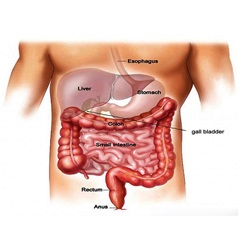
G.I. Laparoscopy stands for gastrointestinal surgeries by laparoscopic technique. G.I. surgeries can be divided into 2 areas, the upper G.I. tract and the lower G.I. tract upper G.I. tract consists of the stomach, mouth, oesophagus and duodenum. The lower G.I. tract consists of the small intestine, large intestine and rectum.
G.I. surgeon treating a range of conditions, these include : Abdominal adhesions, Pancreatitis, Appendicitis, All types of Hernia ( like inguinal, incisional and umbilical ), Intestinal obstructions, Peptic and Intestinal Perforation, Intussusceptions, Diverticulitis, Crohn's disease, Ulcerative colitis, Peptic ulcer, Prolapsed rectum. Hepatobiliary surgeries for e.g. Cholelithiasis . Gastrointestinal cancer for e.g. Bile duct cancer , Pancreatic cancer, Small intestinal cancer, Gastric cancer, Colorectal cancer, cancer of the oesophagus and the like .
What is laparoscopic surgery ?
Also called Keyhole surgery. It is a minimally invasive surgery performed through small incision with aid of a camera rather than large incision as in open surgery. There are a number of advantages to the patient with laparoscopic surgery versus the open procedure, these include reduce morbidity, faster recovery, reduced pain, lesser complication rate, reduce hospital time and the like .
What surgeries are done by laparoscopy
Surgeries done by laparoscopy are Appendicectomy, Peptic and Intestinal perforation, Cholecystectomy, Hysterectomy, Hernioplasty and the like .


